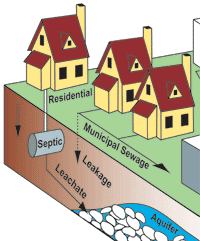
Photo from wikipedia
The vast majority of knowledge related to the question of, "To what extent do pharmaceuticals in the environment pose a risk to wildlife?", stems from the Asian vulture crisis (>99%… Click to show full abstract
The vast majority of knowledge related to the question of, "To what extent do pharmaceuticals in the environment pose a risk to wildlife?", stems from the Asian vulture crisis (>99% decline of some species of old-world vultures on the Indian subcontinent related to the veterinary use of the non-steroidal anti-inflammatory drug (NSAID) diclofenac). The hazard of diclofenac and other NSAIDs (carprofen, flunixin, ketoprofen, nimesulide, phenylbutazone) to vultures and other avian species has since been demonstrated; indeed only meloxicam and tolfenamic acid have been found to be vulture-safe. Since diclofenac was approved for veterinary use in Spain and Italy in 2013 (home to ~95% of vultures in Europe), the risk of NSAIDs to vultures in these countries has become one of the principal concerns related to pharmaceuticals and wildlife. Many of the other bodies of work on pharmaceutical exposure, hazard and risk to wildlife also relate to adverse effects in birds, (e.g., poisoning of scavenging birds in North America and Europe from animal carcasses containing pentobarbital; secondary and even tertiary poisoning of birds exposed to pesticides used in veterinary medicine as cattle dips; migratory birds as a vector for the transfer of antimicrobial and antifungal resistance). While there is some research related to endocrine disruption in reptiles and potential exposure of aerial insectivores, there remain numerous knowledge gaps for risk posed by pharmaceuticals to amphibians, reptiles and mammals. Developing non-invasive sampling techniques and new approach methodologies (e.g., genomic, in vitro, in silico, in ovo) are important if we are to bridge the current knowledge gaps without extensive vertebrate testing. This article is protected by copyright. All rights reserved. Environ Toxicol Chem 2022;00:0-0. © 2022 SETAC.
Journal Title: Environmental toxicology and chemistry
Year Published: 2022
Link to full text (if available)
Share on Social Media: Sign Up to like & get
recommendations!